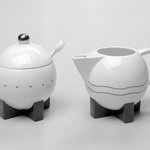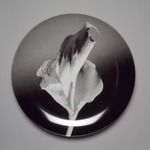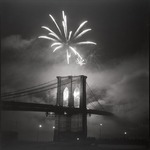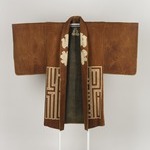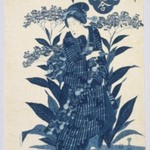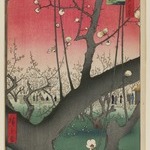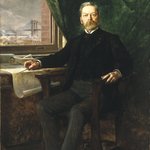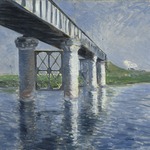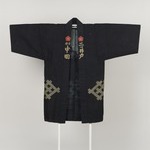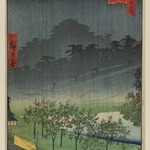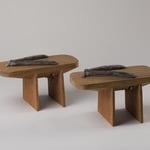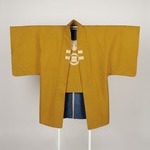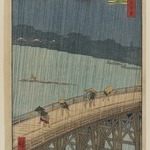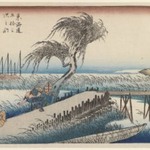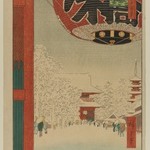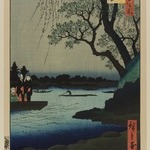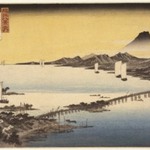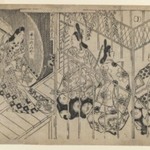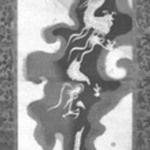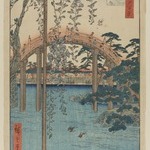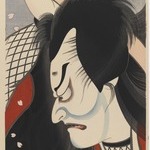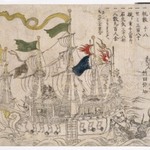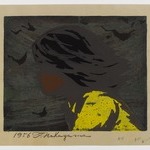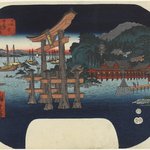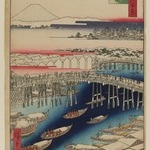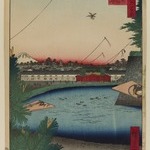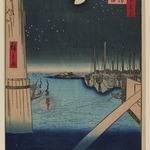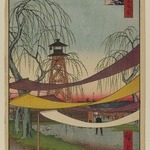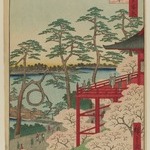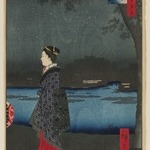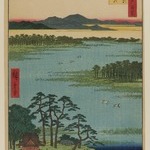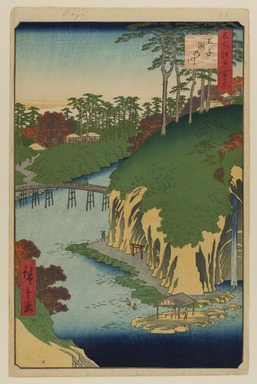
Takinogawa, Oji, No. 88 from One Hundred Famous Views of Edo
Utagawa Hiroshige
Asian Art
In this view of the Shakujii River as it passes through the Oji district, the patches of orange reflect the famous autumnal display of maple trees in the area. The Takinogawa of the title, meaning "Waterfall River," is an appropriate name for the river at this point, which was known for its Seven Falls (encountered earlier in number 49).
Unfortunately, the glorious orange color of the maples has blackened with age, spoiling the intended effect. The pigment used here is probably either red lead or iron oxide, both of which can blacken over time with exposure to air.
MEDIUM
Woodblock print
DATES
4th month of 1856
PERIOD
Edo Period, Ansei Era
DIMENSIONS
Sheet: 14 3/16 x 9 1/4 in. (36 x 23.5 cm)
Image: 13 3/8 x 8 3/4 in. (34 x 22.2 cm) (show scale)



MARKINGS
No publisher's seal visible, probably lost when the left margin was trimmed.
SIGNATURE
Hiroshige-ga
COLLECTIONS
Asian Art
ACCESSION NUMBER
30.1478.88
CREDIT LINE
Gift of Anna Ferris
PROVENANCE
Prior to 1930, provenance not yet documented; by 1930, acquired by Anna Ferris of Summit, NJ; 1930, gift of Anna Ferris to the Brooklyn Museum.
Provenance FAQ
CATALOGUE DESCRIPTION
This is a view of the Shakujii River in the Oji district; two other views of the river were seen in prints 19 and 49 of the series. One of the attractions here was the autumn display of maple trees planted along the banks, however the once-brilliant orange ink of the print has blackened with age. The pigment used here was either red lead or iron oxide, both of which can blacken over time with exposure to the atmosphere. The Matsubashi Bridge (Pine Bridge) shown here offered convenient access to the Oji Gongen Shrine and its affiliated temple of Kinrinji. The yellow roof at the upper right is the Matsubashi Benten Shrine and further to the right, against the margin, is the main hall of Kongoji Temple, in whose precincts the Benten Shrine was located. The temple became known as Momijidera or Maple Temple and survives today near Maple Bridge. The Takinogawa ("waterfall river") of the title applies to the area south of the river, although it would seem to be an appropriate name for the river at this point, which is known for its Seven Falls. The one to the right was known as Benten Falls. Today this entire stretch of river is a concrete channel, accommodating a high-rise apartment complex.
EXHIBITIONS
MUSEUM LOCATION
This item is not on view
CAPTION
Utagawa Hiroshige (Japanese, 1797–1858). Takinogawa, Oji, No. 88 from One Hundred Famous Views of Edo, 4th month of 1856. Woodblock print, Sheet: 14 3/16 x 9 1/4 in. (36 x 23.5 cm). Brooklyn Museum, Gift of Anna Ferris, 30.1478.88 (Photo: Brooklyn Museum, 30.1478.88_PS20.jpg)
IMAGE
overall, 30.1478.88_PS20.jpg. Brooklyn Museum photograph, 2023
"CUR" at the beginning of an image file name means that the image was created by a curatorial staff member. These study images may be digital point-and-shoot photographs, when we don\'t yet have high-quality studio photography, or they may be scans of older negatives, slides, or photographic prints, providing historical documentation of the object.
RIGHTS STATEMENT
No known copyright restrictions
This work may be in the public domain in the United States. Works created by United States and non-United States nationals published prior to 1923 are in the public domain, subject to the terms of any applicable treaty or agreement.
You may download and use Brooklyn Museum images of this work. Please include caption information from this page and credit the Brooklyn Museum. If you need a high resolution file, please fill out our online application form (charges apply).
The Museum does not warrant that the use of this work will not infringe on the rights of third parties, such as artists or artists' heirs holding the rights to the work. It is your responsibility to determine and satisfy copyright or other use restrictions before copying, transmitting, or making other use of protected items beyond that allowed by "fair use," as such term is understood under the United States Copyright Act.
The Brooklyn Museum makes no representations or warranties with respect to the application or terms of any international agreement governing copyright protection in the United States for works created by foreign nationals.
For further information about copyright, we recommend resources at the United States Library of Congress, Cornell University, Copyright and Cultural Institutions: Guidelines for U.S. Libraries, Archives, and Museums, and Copyright Watch.
For more information about the Museum's rights project, including how rights types are assigned, please see our blog posts on copyright.
If you have any information regarding this work and rights to it, please contact copyright@brooklynmuseum.org.
RECORD COMPLETENESS
Not every record you will find here is complete. More information is available for some works than for others, and some entries have been updated more recently. Records are frequently reviewed and revised, and we welcome any additional information you might have.
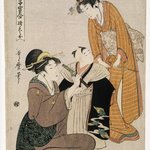
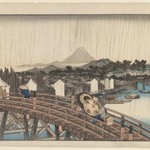

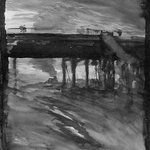
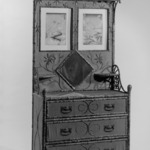


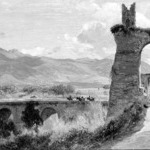


![[Untitled]](https://d1lfxha3ugu3d4.cloudfront.net/images/opencollection/objects/size2_sq/86.49.1.jpg)
